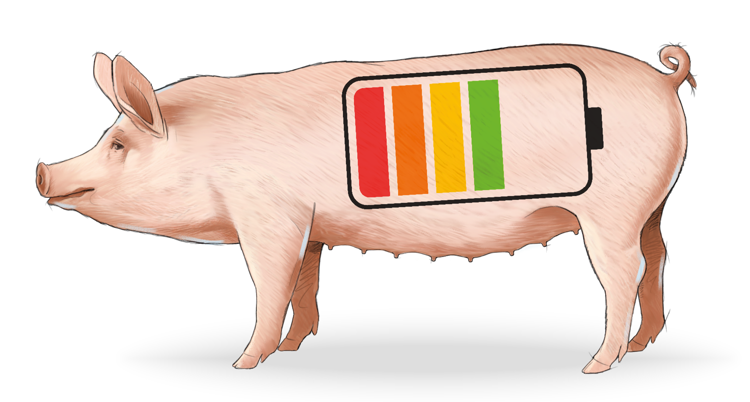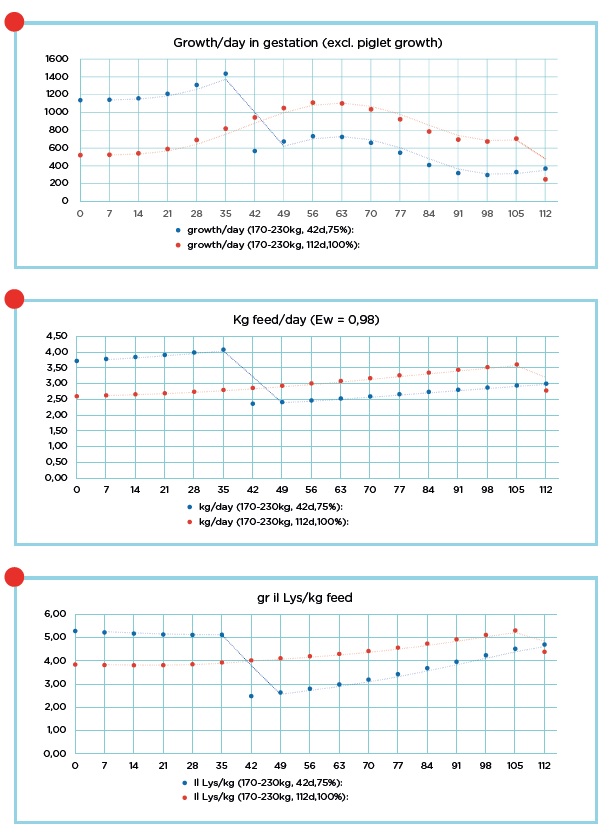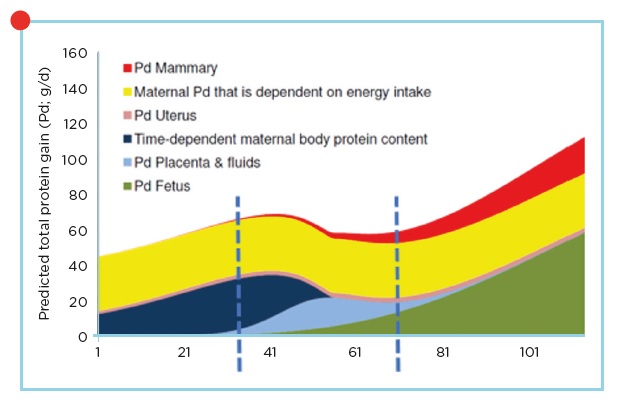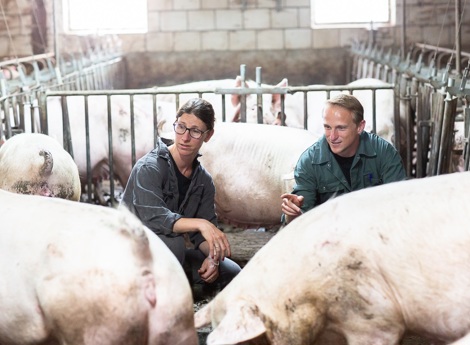Feeding the gestating sow - a practical approach
In the previous newsletter, the subject was the lactating sow. The highlights of the article were to adapt an on-farm approach based on the individual sow, but still to keep it efficient and practical. The modern sow is highly capable of mobilizing body reserves; she is, in fact, a perfect 'battery.'

Of course, a battery needs to be recharged during gestation. The question is, how much needs to be recharged and how quickly do we want that to happen? Once more, this needs to be based on the individual sow in a practical approach.
Big differences in requirements in early gestation
As we did for the lactating sow, we also simulated the gestating sow in a technical model (see graphs). There are two simulations in the graphs. In the past, nutritional standards were based on linear growth (extrauterine growth) during the whole gestation period. If a young sow still needs to grow in the first parity, or she needs to recover from the previous lactation, the goal will be to establish that growth as fast as possible in early gestation.
The second simulation in the graph shows that we expect the sow to establish 75% of the extrauterine growth within the first 42 days of gestation. The outcome of the simulation might reveal a much bigger difference in growth than what you would expect. Due to this, the demand for kilograms of feed and lysine levels in the feed is quite high. Note: this applies to high-prolific sows who need recovery from the previous lactation and young sows who still need to grow. Older parity sows within a sow herd might not require it. These examples indicate that you need to make significantly better choices in how to feed the individual sow at the beginning of gestation. In practice, many farmers are not making these significant individual choices.

Avoid under-feeding in mid-gestation
The middle period of gestation is sometimes underestimated. In the graph showing growth per day in gestation, you can see that the sow's growth is very high. This growth is mainly fluids and might not require as many nutrients. However, the development of the placenta and umbilical cord is very important for strong and healthy piglets at birth since it’s the only source of nutrients for the fetuses. Therefore, underfeeding in this period needs to be avoided. Nowadays, many farmers apply a high-low-high feeding schedule in gestation, especially in certain group housing systems where there might be feed competition. A lower feed level in mid-gestation will pose a risk for the less dominant sows in the group. To avoid this risk, we prefer a more consistent, flat feeding schedule in mid- and late gestation.
Late gestation: battery function is starting
The late gestation period might be a bit overestimated. Of course, the growth of the unborn piglets is substantial. For example, 18 unborn piglets will grow about 70 to 80 grams per day in the last 10 days of gestation, which amounts to approximately 1.350 grams of sow weight. Considering the requirements for maintenance and udder development, it’s obvious that it’s not possible to provide all the required nutrients to the sow. Therefore, we have to rely on the sow's capacity to mobilize her body reserves. The focus in this period should be to keep the sow fit so she will act as the perfect “battery” instead of trying to provide an excessive amount of feed.
What practical action do we need to take:
- Take significant steps in the feed schedule based on body condition at the start of gestation for the individual sow. Work with decision moments (at serving and at scanning) and a coloring system to make it practical, individual, and visual.
- Be careful with a too-low feed level in mid-gestation, especially if the feed system allows competition on feed intake.
- Rely on the capacity of the sow battery to take care of vital and good birthweights. Do not overfeed her in late gestation.
What nutritional considerations do we need to take into account:
- Based on energy and protein requirements in these calculations, the benefit of a two-phase gestation feed strategy for the beginning and end of gestation is doubtful. If farms can feed more than one gestation diet, it's better to develop a second gestation feed based on recovery or first-parity development.
- Feeding the sow based on her “battery” function needs huge metabolic processes for the sow. Therefore supporting her with the right amounts and sources of vitamins and trace elements is very important. Koudijs has renewed these recommendations for the modern sow.
Train yourself and farm managers to make the right feeding choices at the right moments in gestation. We have experienced in practice that our way of supporting, by combining your knowledge and experience with ours, leads to very predictable and effective results, and is highly appreciated by our clients.
About the author

Huub Derix
Swine Nutritionist




